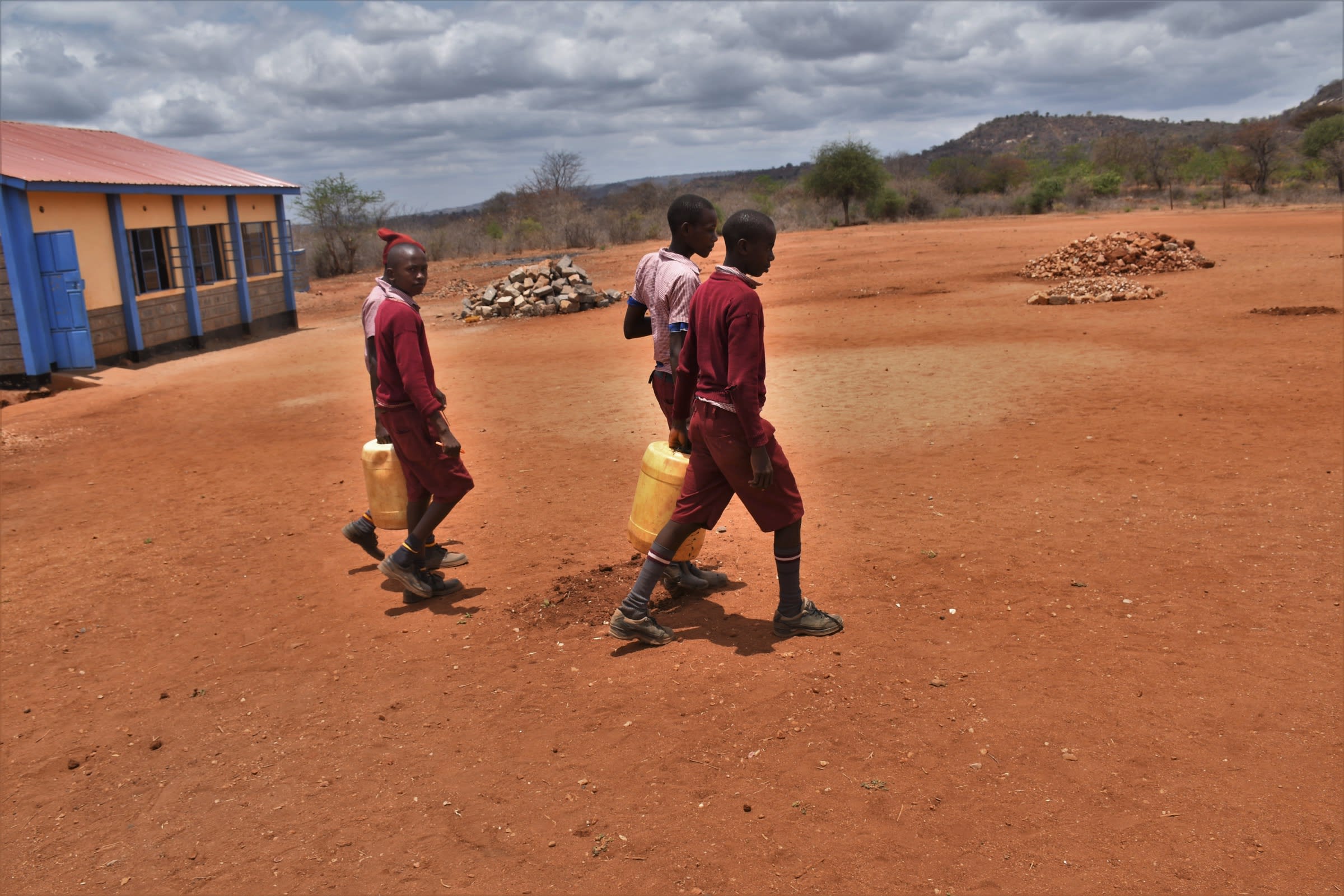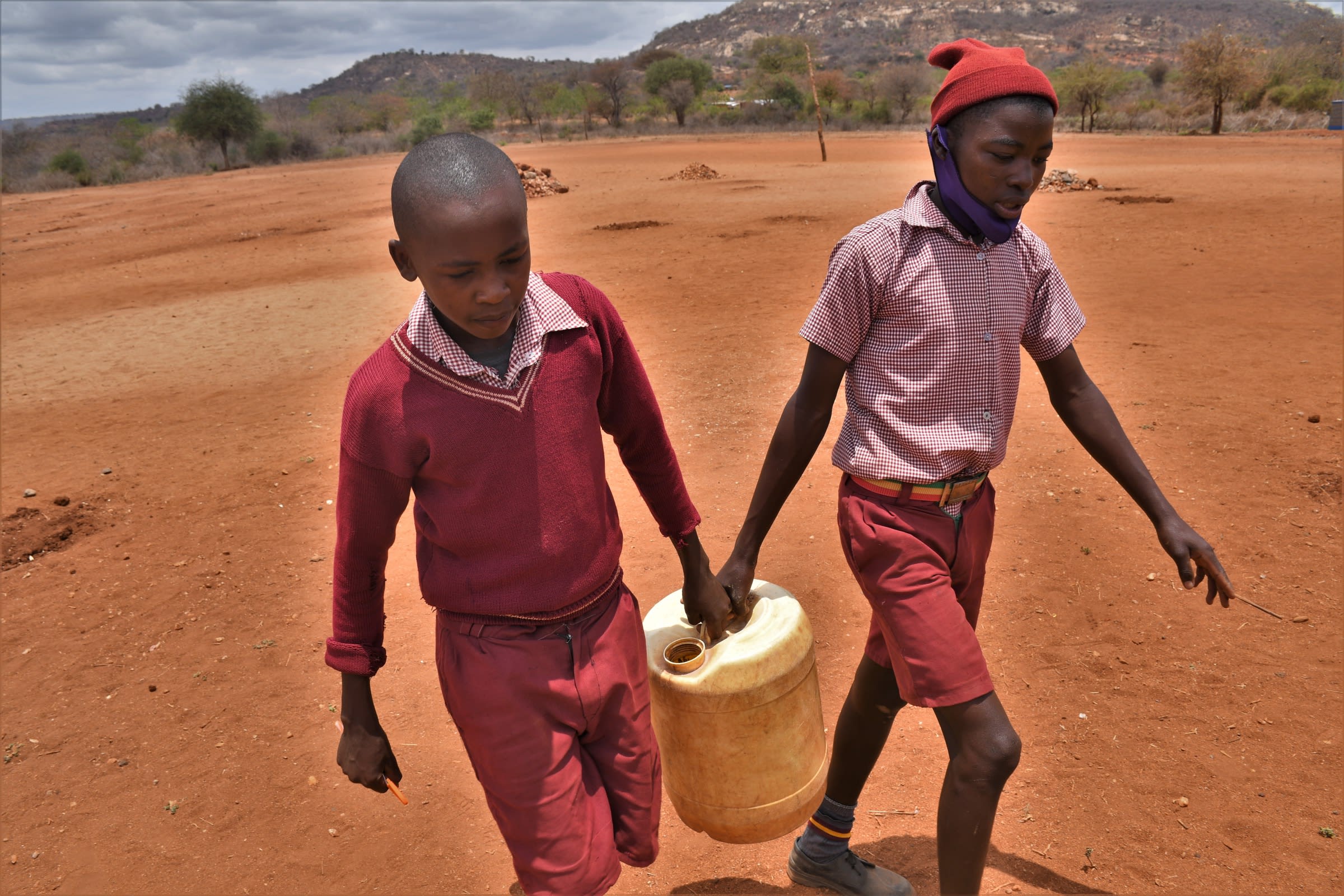It's difficult to keep the 97 students of Kwa Mutisya Primary School enrolled, even in such a rural and remote area as Kyuso. Students are constantly leaving because of the school's ongoing water crisis. They can hardly be blamed for not wanting to attend, given their primary method of obtaining water during the dry season.
When the school's small rain tank runs dry during about half of the year, students trudge through 10 kilometers (6.27 miles) of scorching sun and swirling dust to reach the nearest dry riverbed, where they must scoop up water from deep holes dug into the ground.

"Water scarcity is very intense in this school," said Head Teacher Johanna Toto, one of 11 teachers. "We are struggling to make the school conducive enough for the students to learn here. Inadequate water in the school affects infrastructural development. I have to wait 'til the rainy season to continue with the projects. When it comes to the discipline of the learners, it becomes very hard to control."

"Water scarcity in school greatly affects our day-to-day activities in learning and our efforts to excel academically," said student Kyalo M., 17. "After classes, we have to walk up to 10 kilometers in order to fetch water for drinking. The water we fetch is dirty and we have to drink it as it is because we have no other alternatives."
The water the students do end up getting makes them sick. The most common complaints are typhoid and amoeba.
“Universal access to safe drinking water is a fundamental need and human right. Securing access for all would go a long way in reducing illness and death, especially among children.” - UNICEF
If students can find water, not only must they face the consequences of drinking contaminated water, but hauling it back to their school is exhausting. Each full jerrican weighs approximately 40 pounds.
Sometimes, when the students reach the riverbed, no water is left. So they must trek another 10 kilometers to the next river or return without anything. "Sometimes, when the river is dry, we do not carry water to school, and we are usually punished," Kyalo explained.
With an adequate water source on school property, students will have much more time and energy to commit to their studies, not to mention better health.
What We Can Do:
Rain Tank
We will build a 104,000-liter rain tank for this school, making the others look tiny in comparison. Because of how rarely it rains in Southeastern Kenya, this tank's large volume is designed to store as much water as possible during the seasonal rains, making more water available through the dry months. This water will benefit the students, teachers, and supplementary staff.
Parents will mobilize the materials needed for construction, including sand, stones, and water. They will also lend their strength and time to help with the construction. We will complement their materials with a skilled artisan to lead the project in addition to providing the tools, lumber, metal, cement, and gutter system.
As soon as the tank has time to cure, it can begin collecting rainwater for the school's use.
Training
We will train students and staff on sanitation, hygiene, and other topics for 1 day. Those in attendance will form a school health club that will promote good hygiene and sanitation practices both at school and at home. They will learn all of the steps to proper handwashing, how to treat water, and how to keep their environment clean. The school will also be taught how to best oversee and maintain their new rain tank and handwashing stations.
Handwashing Stations
A total of 3 handwashing stations will be installed upon the project's completion and before training. These are 1,000-liter plastic tanks fitted with 3 taps each, allowing 9 students to wash their hands at once. The student health club and school management will be responsible for making sure the tanks are filled with water and that a cleaning agent such as soap or ash is always available.

 Rainwater Catchment
Rainwater Catchment
 Rehabilitation Project
Rehabilitation Project















 We built a reinforced concrete column right up to the tank’s center, which holds up the roof and prevents it from caving in. We then plastered the walls inside and out with waterproof cement. After that, we installed guttering and channeled it into the tank. Finally, we installed the roofing, made of iron sheets and timber with vents to allow rainwater into the tank from the gutters.
We built a reinforced concrete column right up to the tank’s center, which holds up the roof and prevents it from caving in. We then plastered the walls inside and out with waterproof cement. After that, we installed guttering and channeled it into the tank. Finally, we installed the roofing, made of iron sheets and timber with vents to allow rainwater into the tank from the gutters.
 We delivered three new handwashing stations in time for training. Each of these new stations has three taps so that nine students can wash their hands simultaneously.
We delivered three new handwashing stations in time for training. Each of these new stations has three taps so that nine students can wash their hands simultaneously.













